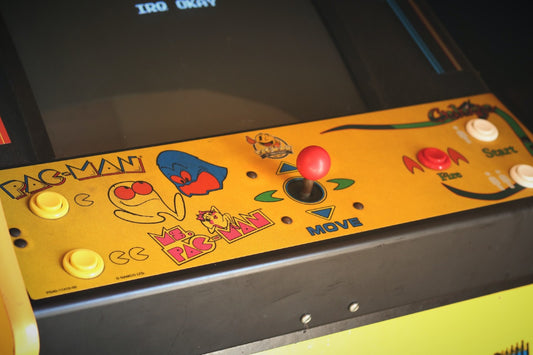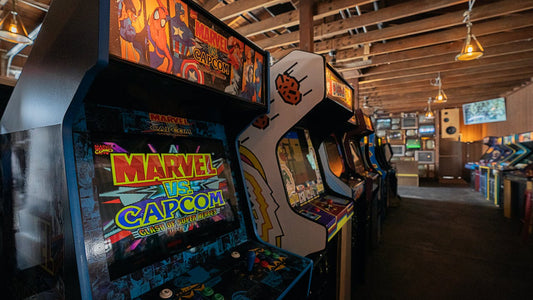Early Arcade History - 1979
Radar Scope (1979)
Nintendo’s Radar Scope was thought of as a huge commercial failure across America. However, in Japan was ever-popular. The game could be thought of as a cross between Space Invaders (Taito) and Galaxian (Namco). The game was released as upright, cockpit and cocktail cabinets. Donkey Kong (1981) was built on conversions of Radar Scope cabinets that did not sell. It is thought that out of the 3,000 cabinets produced for Radar Scope, a majority of 2,000 were converted into Donkey Kong machines for 1981.
Players controlled the captain of the Sonic Spaceport and defended the ship from enemies, of which included Gamma Raiders (represented as spaceships). The overall aim of Radar Scope was to destroy 48 enemy Gamma Raiders. The controls of the game were flexible when considering controlling the difficulty of levels. The player is rewarded at 7,000, 10,000, 15,000 and 20,000 points with extra Spaceports.
Tail Gunner (1979)
Vectorbeam created Tail Gunner in 1979. The basis of the game was that the player controls a tail gunner of a large ship in Space. The enemy ships are programmed to attack in groups of three, and the player had to shoot them down. Tail Gunner is seen as more of a technical game more than most other arcade cabinet games that were being produced at the time. This can be seen in the gameplay as, to shoot the enemy ships, the player had to aim through a set of crosshairs. Due to the viewpoint in the game, the developers had to think of a new way to adapt how the background was to move. This was finally settled on making the stars appear to be moving into the centre of the screen.
An addition which can make Tail Gunner seem more modern is the addition of a shield, which the player could temporarily use. This would block enemy ships from passing the player. After 10 ships had slipped past the player, the game ended. The game was further sold as a sit-down cabinet and re-branded ‘Tail Gunner II’. Additionally, the controls entailed a singular metal joystick with a button to shoot from at the tip of this.
Warrior (1979)
Warrior is considered as one of the first fighting simulator games available. Published under Vectorbeam, the look and style of the game show similarities to the company’s other works such as Tail Gunner (of the same year). The fighter game had an overhead view of two knights, in which two players fought head to head. The controls for Warrior were simply a joystick and button. Originally, Vectorbeam designed Warrior to have two joysticks per player, but due to budget requirements had to cut this out. Additionally, due to Vectorbeam’s budget requirements the cabinets were not made to a decent standard, especially when they are compared with other game cabinets of the time.



